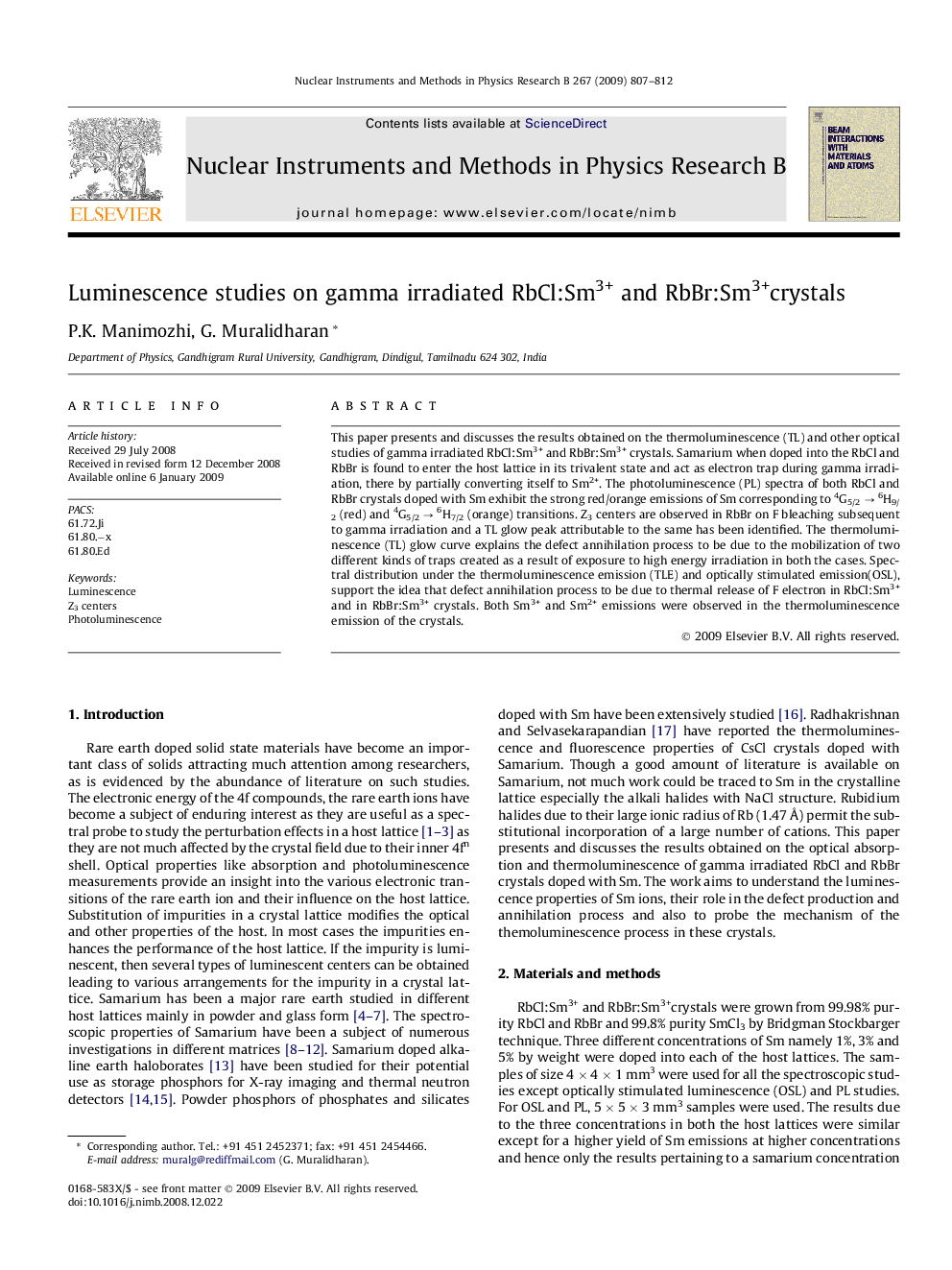| Article ID | Journal | Published Year | Pages | File Type |
|---|---|---|---|---|
| 1687384 | Nuclear Instruments and Methods in Physics Research Section B: Beam Interactions with Materials and Atoms | 2009 | 6 Pages |
Abstract
This paper presents and discusses the results obtained on the thermoluminescence (TL) and other optical studies of gamma irradiated RbCl:Sm3+ and RbBr:Sm3+ crystals. Samarium when doped into the RbCl and RbBr is found to enter the host lattice in its trivalent state and act as electron trap during gamma irradiation, there by partially converting itself to Sm2+. The photoluminescence (PL) spectra of both RbCl and RbBr crystals doped with Sm exhibit the strong red/orange emissions of Sm corresponding to 4G5/2 â 6H9/2 (red) and 4G5/2 â 6H7/2 (orange) transitions. Z3 centers are observed in RbBr on F bleaching subsequent to gamma irradiation and a TL glow peak attributable to the same has been identified. The thermoluminescence (TL) glow curve explains the defect annihilation process to be due to the mobilization of two different kinds of traps created as a result of exposure to high energy irradiation in both the cases. Spectral distribution under the thermoluminescence emission (TLE) and optically stimulated emission(OSL), support the idea that defect annihilation process to be due to thermal release of F electron in RbCl:Sm3+ and in RbBr:Sm3+ crystals. Both Sm3+ and Sm2+ emissions were observed in the thermoluminescence emission of the crystals.
Related Topics
Physical Sciences and Engineering
Materials Science
Surfaces, Coatings and Films
Authors
P.K. Manimozhi, G. Muralidharan,
